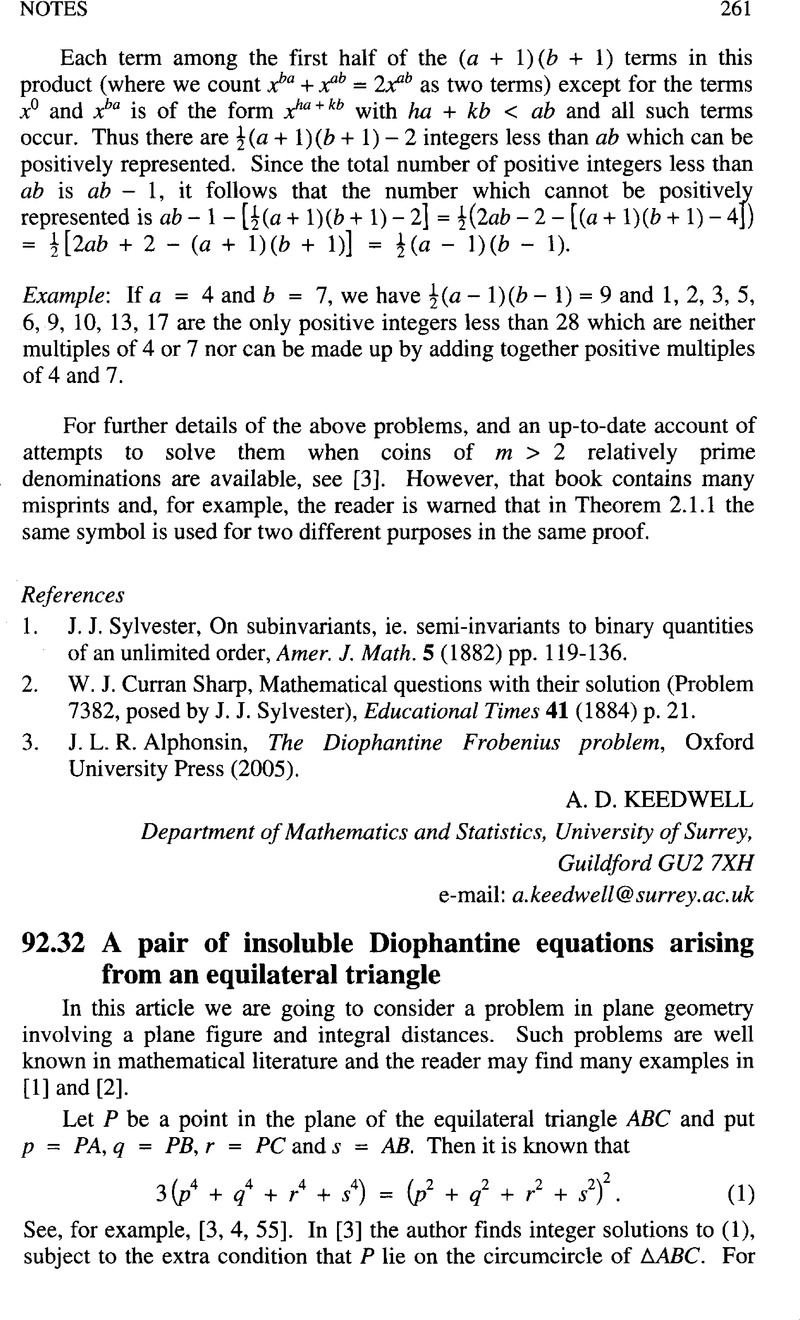No CrossRef data available.
Article contents
92.32 A pair of insoluble Diophantine equations arising from an equilateral triangle
Published online by Cambridge University Press: 01 August 2016
Abstract
An abstract is not available for this content so a preview has been provided. Please use the Get access link above for information on how to access this content.

- Type
- Notes
- Information
- Copyright
- Copyright © The Mathematical Association 2008
References
1.
Dickson, L. E., History of the theory of numbers, Vol. 2, Chelsea, New York (1971).Google Scholar
2.
Bradley, C. J., Challenges in geometry: For mathematical olympians past and present, Oxford University Press (2005).Google Scholar
3.
Sastry, K. R. S., Natural number solutions to 3 (p
4 + q
4 + r
4 + s
4) = p
2
q
2 + r
2 + s
2)2
, Mathematics and Computer Education
34 (2000) pp. 6–11.Google Scholar
4.
Gardner, M., Mathematical carnival: a new round-up of tantalizers and puzzles from Scientific American, Vintage Books, New York (1977) pp. 56–57 and 63.Google Scholar
5.
Guy, R. K., Unsolved problems in number theory (2nd edn.), Springer Verlag (1994) pp. 181–185.Google Scholar


